In the 50’s and 60’s magazines flourished. Television had made its entrance but the print medium still remained strong with lots of fiction and articles to make pictures for. A challenging mix of love stories, westerns, crime drama, business, travel, politics — you name it, needed stand-out graphics that would catch the eye.
“Blind Spot,” by John Rhodes (1962)
Many new trends and styles came and went and art directors would often demand new directions and expect you to work in a number of styles.
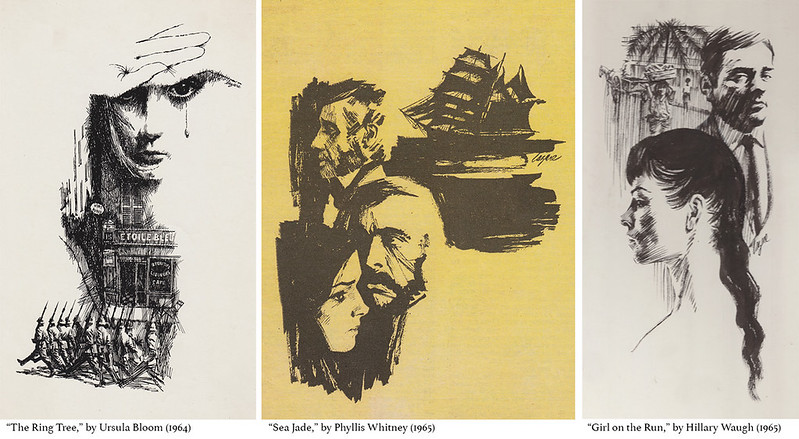
One Art Director who kept my phone humming was Ron Butler with a great smile and easy manner. He was Art Director at The Star Weekly and The Star Weekly Novel, a section of the paper dedicated to fiction. Many great writers had a vehicle for their prose in novella form and they all needed black and white illustrations to embellish them.

I did many of them for Ron (which you can see both above and below), as did most of the top illustrators of the day. I loved reading the story and choosing a scene to draw and bring the characters to life. Unfortunately few newspapers or magazines contain fiction today. Here are a few more of the Star Weekly illustrations I did for novellas:
Liberty Magazine, owned by flamboyant entrepreneur Jack Kent Cooke, specialized in articles on Canadian crime, Hollywood gossip, disasters, and often paradoxically enlightening stories on Canadian history by Frank Rasky, who also art directed. The Canada policy was highlighted by city names in their titles, such as: “The Vancouver Killer who Trusted his Wife,” “Curious Case of the Murderous Halifax Doctor,” or “Montreal Darling, Cheating Honeybunch, I’ll Murder You.”
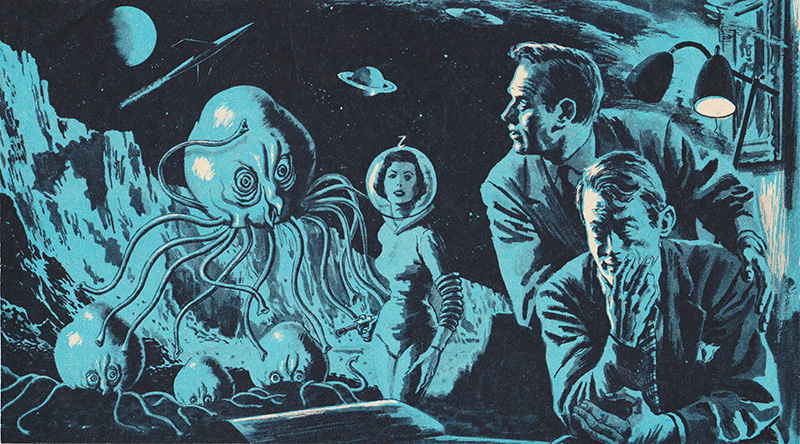
“The Psychiatrist who Caught his Patient’s Craze,” by Dr. Robert Linder (Liberty Magazine, 1956)
Hugh Garner, the legendary writer wrote for the magazine and I met him at Liberty Magazine while delivering work, in the same way I met Pierre Berton at publishing houses. When I look back one of the advantages of being a freelance illustrator was all the interesting accomplished people one gets to meet when delivering your work to the offices of clients. Some of them become friends and enrich your life in myriad ways.
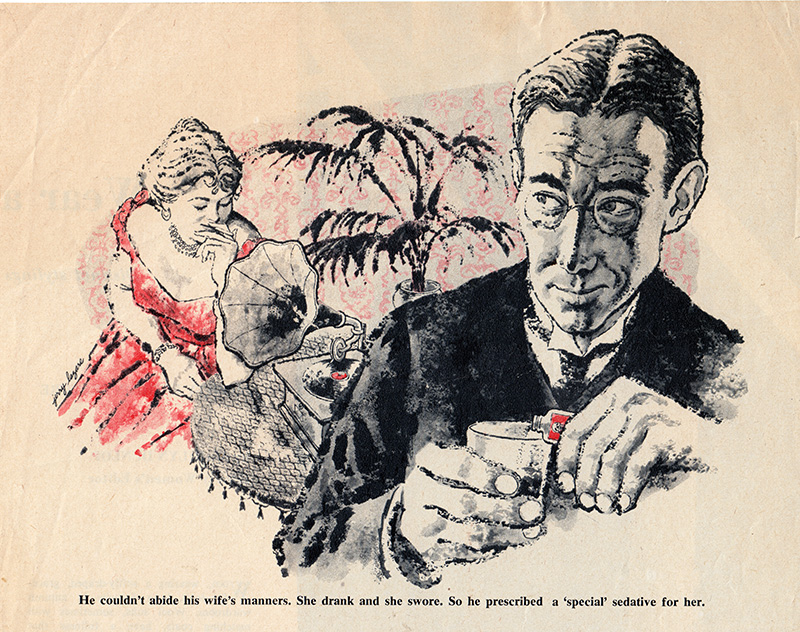
“Curious Case of the Murderous Halifax Doctor,” by Alan Hynd (Liberty Magazine, 1960)
A constant dilemma of being an illustrator is the transition from your original art to the reproduction. Your audience never sees the original, but only it’s reproduction on the page.
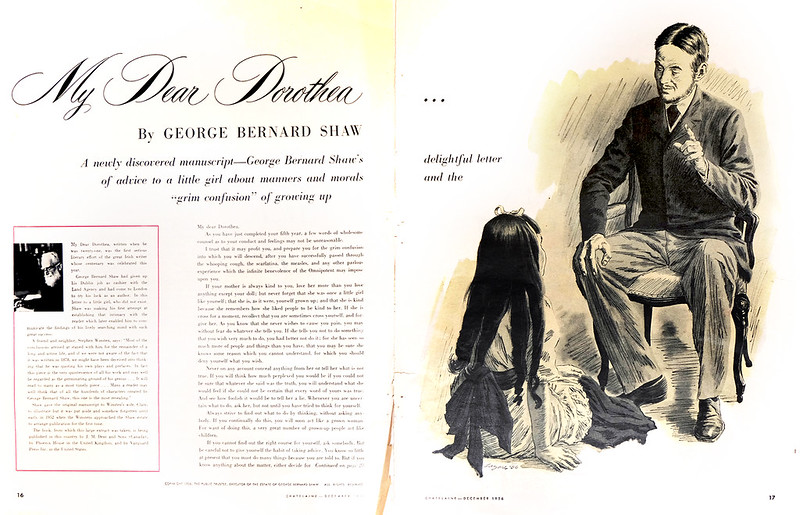
“My Dear Dorothea,” by George Bernard Shaw (Chatelaine Magazine, 1956)
Before the digital revolution, technicians working on a press with inks, paper, and plates, would pull proofs prior to reproducing your art. The Oxford Dictionary definition of ‘proof’: “printing a trial impression taken from type or film used for making corrections before final printing.”
Depending on many factors, but mostly the skill and dedication of the technicians, the reproduction could be very true to your original or a mess that would make your heart drop. Often it fell somewhere in between.
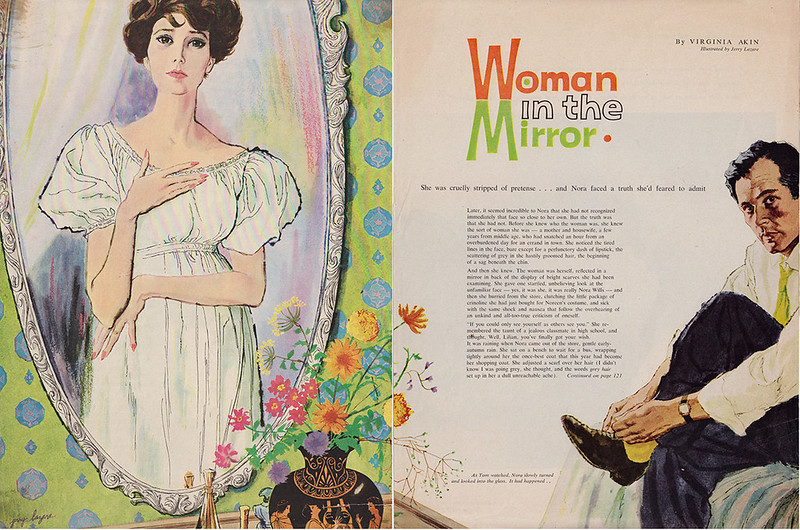
“Woman in the Mirror,” by Virginia Akin (1959)
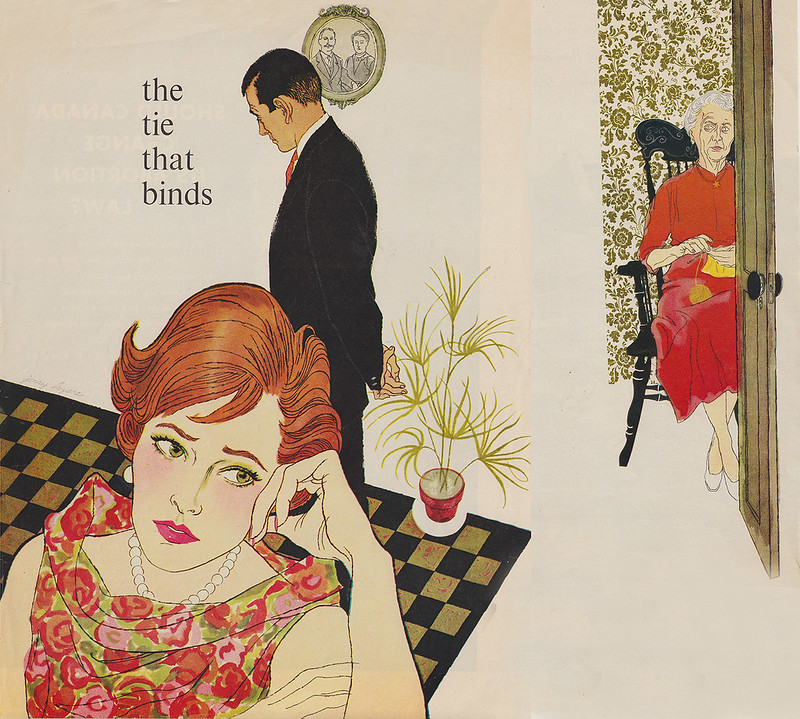
“The Tie that Binds,” by Loretta Burrough (1959)
It depended on the art director to okay the proof and thus the final reproduction. One art director who cared about quality was Gene Aliman at Maclean’s Magazine. He was a no-nonsense, serious perfectionist. I often saw on his desk proofs from the painter marked with hundreds of written corrections for the printer to follow. Below is a very early illustration done in 1955 for Maclean’s Magazine. It showed my love for Albert Dorne’s work. His style was very animated with a strong line approach and washes of coloured inks floated on top. He also was an excellent draftsman and this showed up in the way that he drew hands.
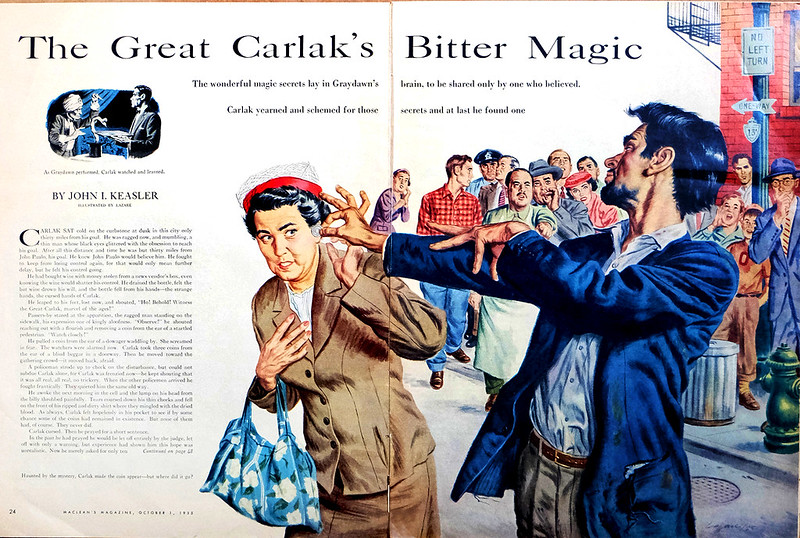
“The Great Carlak’s Bitter Magic,” by John I. Keasler (1955)
Later, with my love of painterly illustrators and fine artists, my style became more opaque and painterly.
Continued on Friday...

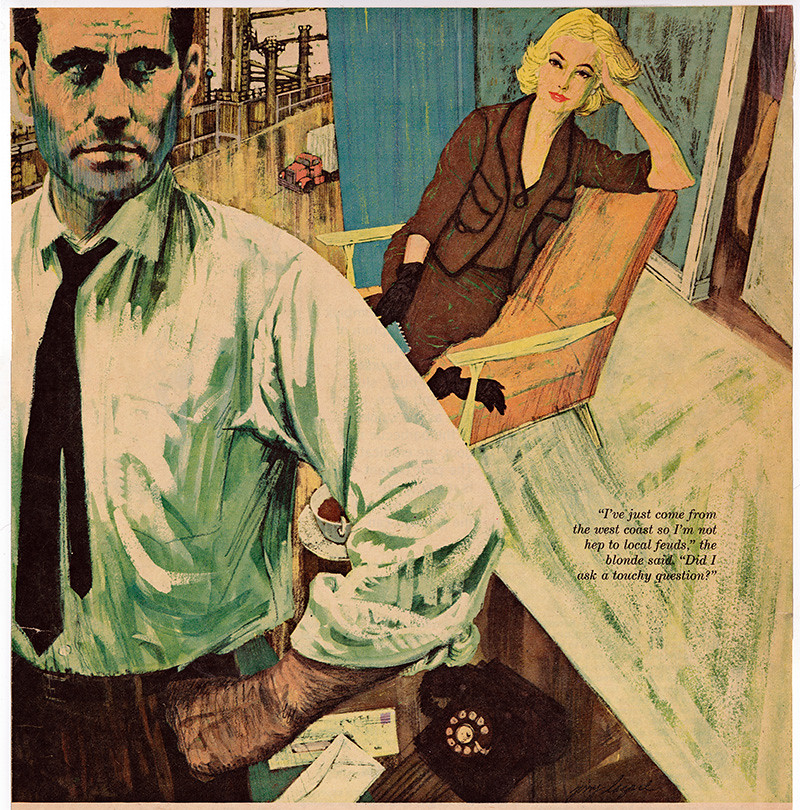
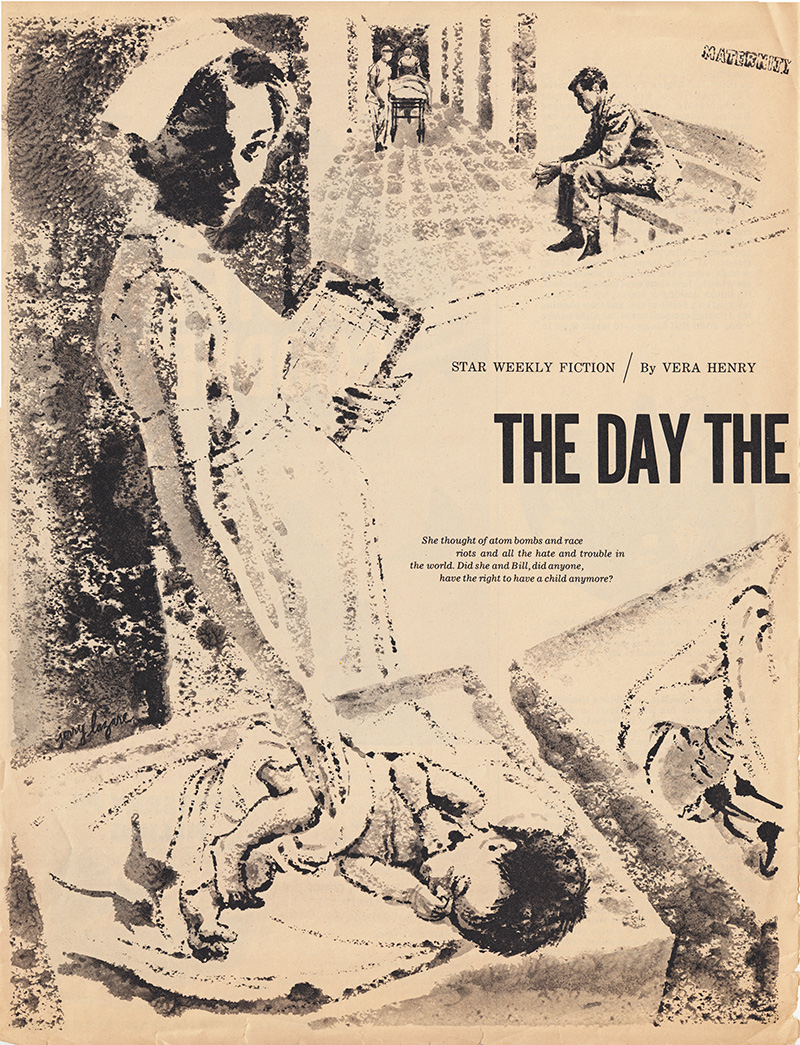
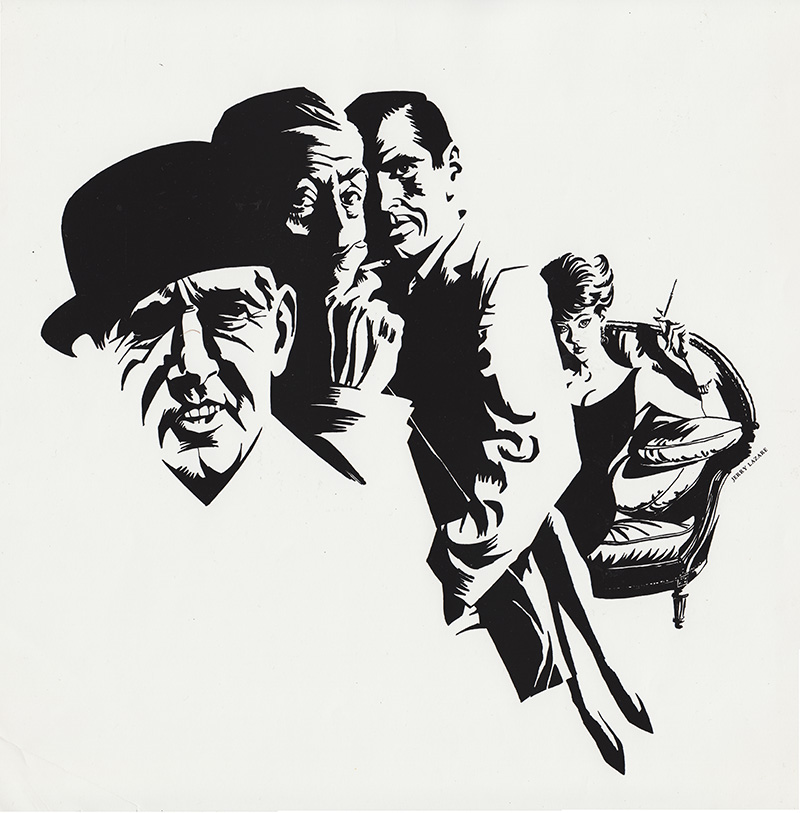
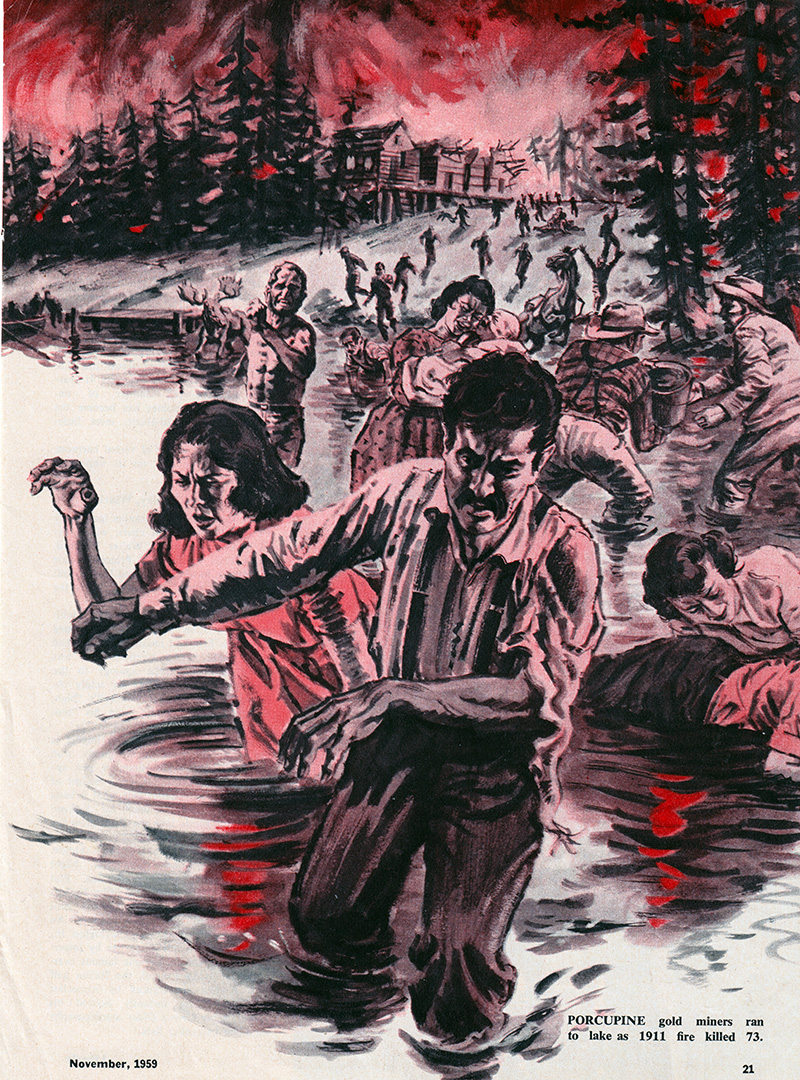
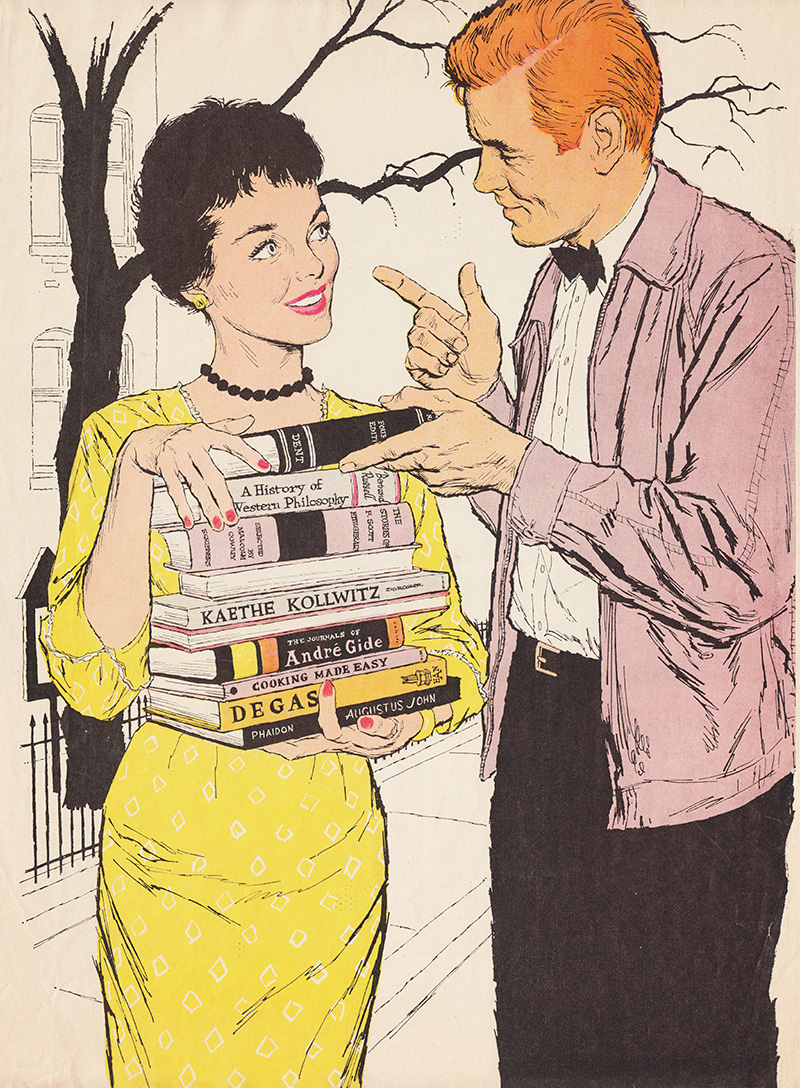
Fascinating recollections, Mr. Lazare! Thank you. Your samples show such creativity and versatility. They're all so eye-catching. So do you think the evolution toward style-consciousness in '60s illustration was in part a response to the competition from television? I wonder how aware the illustrators and art directors were at the time about the fact that TV would take audiences (and advertisers) away from the magazines. Despite the competition from TV—or maybe because of it—the illustrators of the time doing top-notch work. It's really great to hear your recollections. Please feel free to be very geeky and technical about registration marks, pastel comps, greeking type, and such stuff.
ReplyDeleteJim; here is Gerry's reply:
Delete"Thank you James to your kind comments and interesting questions. As to the arrival of television and it's effect on illustration on the whole, I think it was a positive one. It created a new market for illustrators with new graphics for children's shows and wonderful art direction and graphics for specials and sitcoms.
Radio - our main family oriented entertainment before television - and newspapers may have lost some advertising revenue, but on the whole not a lot I believe.
As to The Famous Artist's Course, my friendship with Al Dorne started before he and Robert Fawcett's dislike of the correspondence courses of the day convinced them to establish a really good one.
Young would-be illustrators were their target and Al sought my advice to it's chances and to recommend someone to handle it's promotion and brand in Canada. My boss and art director at Bomac, Robin Cumine was a distinguished artist himself and agreed to the position.
I was the first Canadian to take the course but I was already an apprentice, very busy at Bomac and only had weekends to give to it. I completed nine lessons. The lessons were excellent with a lot of work demanded. They were returned with overlay corrections suggesting improvements. I didn't know the names of the instructors. I knew the course would be a great success if it was Dorne's.
Unfortunately Al died young. He was a great friend to me, a young boy from Canada. I'll never forget him. I still think of him every day.
Thank you again for your interest, Gerry Lazare"
Hello - I wonder if it's possible to tell the source of the Virginia Akin story, "Woman in the Mirror," illustrated in this article? She was my grandmother and I'd love to be able to find a copy of whatever magazine this appeared in. Many thanks, -Alexander Akin
ReplyDelete